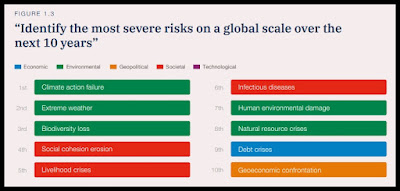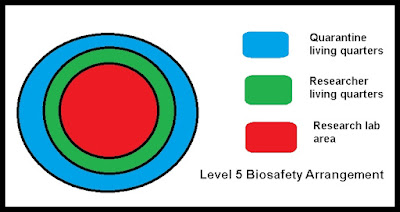In my post "Some Brain Wave Analysts Are Like 'Face of Jesus in My Toast' Claimants" I compared certain neuroscientists to someone who looks at his toast every day, year after year, looking for something that might look like the face of Jesus. A person looking for the face of Jesus in his toast might be frustrated after many days and years of such activity with no success. He might then resort to taking pictures of his toast every day, and playing around with image manipulation algorithms such as sharpening, contrast adjustment, color alteration, saturation adjustments, solarization, Gaussian blur, and so forth. Finally, after torturing the photographic data every day in many different ways, for hundreds or thousands of days, he might announce he has a photo that looks a little like the face of Jesus.
Such "keep torturing the data until it confesses" tactics are extremely dubious. But they go on abundantly in neuroscience and fields such as astrophysics, evolutionary biology and cosmology. The modern neuroscientist has 1001 ways to play around with data until it rather seems to suggest some story to his liking.
Such "keep torturing the data until it confesses" funny business also goes on abundantly in the field of cosmology. We saw a big example of that recently in an article on the Big Think website, a site which often gives us very bad examples of bad reasoning and misleading language. The article by a scientist is entitled "The Case for Dark Matter Has Strengthened." Nothing of the sort has happened, just something like "keep torturing the data until it confesses," or even worse.
The theory of dark matter arose because scientists observed stars rotating around the center of our galaxy at a rate different from the rate predicted by gravitational theory. To try and resolve this discrepancy, astrophysicists created the theory of dark matter: the idea that each galaxy such as ours is within a much larger cloud of invisible matter. The theory required very specific assumptions about the distribution of this dark matter: the idea that our disk-shaped galaxy is surrounded by a spherical halo of dark matter.
For decades scientists "bet the farm" on the Lambda Cold Dark Matter theory, a move which made little sense. There were never any direct observations of any such thing as cold dark matter, so scientists had to claim it was invisible. And even though cosmologists and astrophysicists believed in it with a fervor, cold dark matter never had any place in the Standard Model of Physics. How ironic that scientists often blast people for having faith in important invisible realities, when they have put such unquestioning faith in things they say are important, invisible and never directly observed: dark matter and dark energy. Maybe their thinking is: "you can believe in important invisibles but only OUR important invisibles."
One of the biggest reasons for rejecting this theory of dark matter is that the location of our galaxy's satellite galaxies does not match the location predicted by dark matter theory. Our Milky Way galaxy is surrounded by more than a dozen much smaller "dwarf galaxies." The Dark Matter theory predicts that such satellite galaxies should be randomly distributed in a spherical volume surrounding our galaxy. But instead our galaxy's satellite galaxies are found in a disk-like distribution, near the plane of our disk-like galaxy. The Big Think article confesses, "There has been one observation that is extremely difficult for the dark matter camp to explain: the distribution of small galaxies surrounding bigger ones." The article makes this confession:
"The Milky Way is a spiral galaxy, which means it looks a little like a spinning disk, about 100,000 light-years across and 12,000 light-years thick — essentially a cosmic pizza pan. This is the shape of the visible stars and galaxies. However, dark matter theory says that dark matter is essentially a big, spherical cloud, maybe 700,000 light-years across, with the Milky Way located at the center. Because dark matter is important in galaxy formation, dark matter theory suggests that the satellite galaxies of the Milky Way should also be spherically distributed around it. On the other hand, if dark matter isn’t real, and the correct explanation for speedily rotating galaxies is that the laws of physics must be modified, scientists predict that the satellite galaxies should orbit the Milky Way in roughly the same plane as the Milky Way — essentially extensions of the Milky Way itself. When astronomers measure the location of the 11 known satellite galaxies of the Milky Way, they find that they are located in the plane of the Milky Way. Furthermore, the observed configuration is very improbable from a dark matter point of view."
Instead of favoring the dark matter theory, the positions of our galaxy's satellite galaxies favors a different theory, the theory of MOND (Modified Newtonian Dynamics), an alternate theory of gravity. So how does our Big Think scientist attempt to deal with this embarrassing situation? In a section most ridiculously titled "Another Win for Dark Matter," we read this (referring to Leo galaxies that are two of the 12+ satellite galaxies of our galaxy):
"Both Leo galaxies are currently located approximately in the plane of the Milky Way. However, the other, closer satellite galaxies are more spherically distributed, although not completely so. If the Leo satellites are excluded from the analysis, the data no longer strongly favors the modified physics hypothesis. Importantly, when the motion of the Leo galaxies is measured by the Gaia satellite, the authors found that their location in the plane of the Milky Way is a temporary one. When they project their location a billion years into the past or future (a blink of an eye, cosmologically speaking), these galaxies are no longer located in the galactic plane."
Here we have several ridiculous maneuvers or errors:
(1) The first ridiculous maneuver is an appeal to some analysis in which you simply ignore two of the 12+ satellite galaxies of our galaxy. That is utterly senseless. There are more than 12 of these satellite galaxies, and you should be paying attention to all of them. Arbitrarily excluding two of the 12+ dwarf galaxies from the analysis is like some male saying to his girlfriend, "If you exclude from your analysis my $150,000 college debt and my $35,000 credit card debt, you'll see my financial picture looks pretty good."
(2) The second ridiculous maneuver is making some projection of satellite galaxy positions a billion years into the past and a billion years into the future, in order to try to escape the embarrassing present data that contradicts the theory you are arguing for. We don't know what the position of satellite galaxies will be a billion years from now, nor do we know what their position was a billion years ago. All we know is what their position is now, and that is all we should be considering. Asking someone to ignore the present position of the galaxies and consider some projected position a billion years from now is like some male (whose income is from street begging) asking his girlfriend to ignore his current financial condition, and to consider his financial condition 100 reincarnations in the future, when he may be a billionaire. It is also utterly deceptive to be referring to a billion years as "a blink of an eye." Even in cosmological terms, a billion years is one thirteenth of the age of the universe, something vastly different from "a blink of an eye."
(3) The author has erroneously claimed that the Milky Way has 11 satellite galaxies, even though the article here tells us that the Milky Way has at least 14 satellite galaxies, and the paper here gives in Figure 1 a chart listing the names, masses and luminosities of 18 satellite galaxies of the Milky Way, while stating "The Milky Way has at least twenty-three known satellite galaxies." The author refers to a paper here that has arbitrarily chosen to analyze only 11 of these satellite galaxies, apparently failing to recognize the paper was analyzing only a subset of the Milky Way's satellite galaxies.
The Big Think article show an extreme example of some of the worst tendencies of today's scientists: their tendency to try to slice, dice, twist, shake, contort and distort beyond recognition observational data they don't like. It would be charitable to call such tactics "keep torturing the data until it confesses." A better description would be "keep torturing the data like crazy until you get the faintest hard-to-understand mumble or whisper, and then claim that sound you didn't understand was a confession."
This type of thing goes on all the time all over the place in the world of science:
- What happens when an animal experimental study produces merely a null result? The data is "fixed" by throwing out certain observations, which is justified on the basis of "excluding outliers."
- What happens when a human experimental study fails to produce anything but a null result? The data is "fixed" by throwing in some new "qualification criteria", which is used to exclude certain subjects that helped to prevent a reporting of a positive result.
- What happens when a genome did not have the right characteristics wanted for some evolutionary story line? The problem is "fixed" by replacing that genome with some "projected genome" using the guesswork called phylogenetics.
- What happens when astronomical objects have some position not matching what is predicted by some favored theory? The problem is "fixed" by replacing the current known positions with projected positions thousands, millions or billions of years into the past or future.
- What happens when a study fails to support the hypothesis it was trying to support? The problem is "fixed" by creating a new hypothesis in the middle of doing the study. This example of Questionable Research Practices (called HARKing or Hypothesizing After Results are Known) is not possible when a study is pre-registered or a "registered report." But most studies are not pre-registered or a "registered report."
- What happens when a study looking for some effect fails to find any good evidence for the effect? The problem may be "fixed" by gathering more data, or trying a different set of test subjects. As soon as the effect barely shows up, the gathering of data is stopped, lest things be spoiled by having the "statistically significant" result disappear when still more data is gathered.
In the paper "The Dubious Credibility of Scientific Studies" by Natalie Ferrante of Stanford University, we read this:
"The current process of undertaking, implementing, reviewing, and finally publishing a scientific study is riddled with flaws, as study results are subjected to many biases and interpretations at every level between inception and publication. As a result, when these studies finally reach the public, they are often depicted in ways that fail to reflect the genuine results and are at times utterly incorrect. Industries touting their products, scientists influenced by grants and prestige, reviewers adhering to personal
political agendas, and journalists pressed to sell papers all in turn contribute to the inherently skewed depiction of scientific results to the public. These factors have allowed for a highly unpredictable credibility in scientific reporting, an observation that has been highly overlooked and disregarded. The dissemination and publicity of this incorrect or skewed information, which is believed to be scientifically accurate, can have a detrimental effect on the public in their everyday lives."










